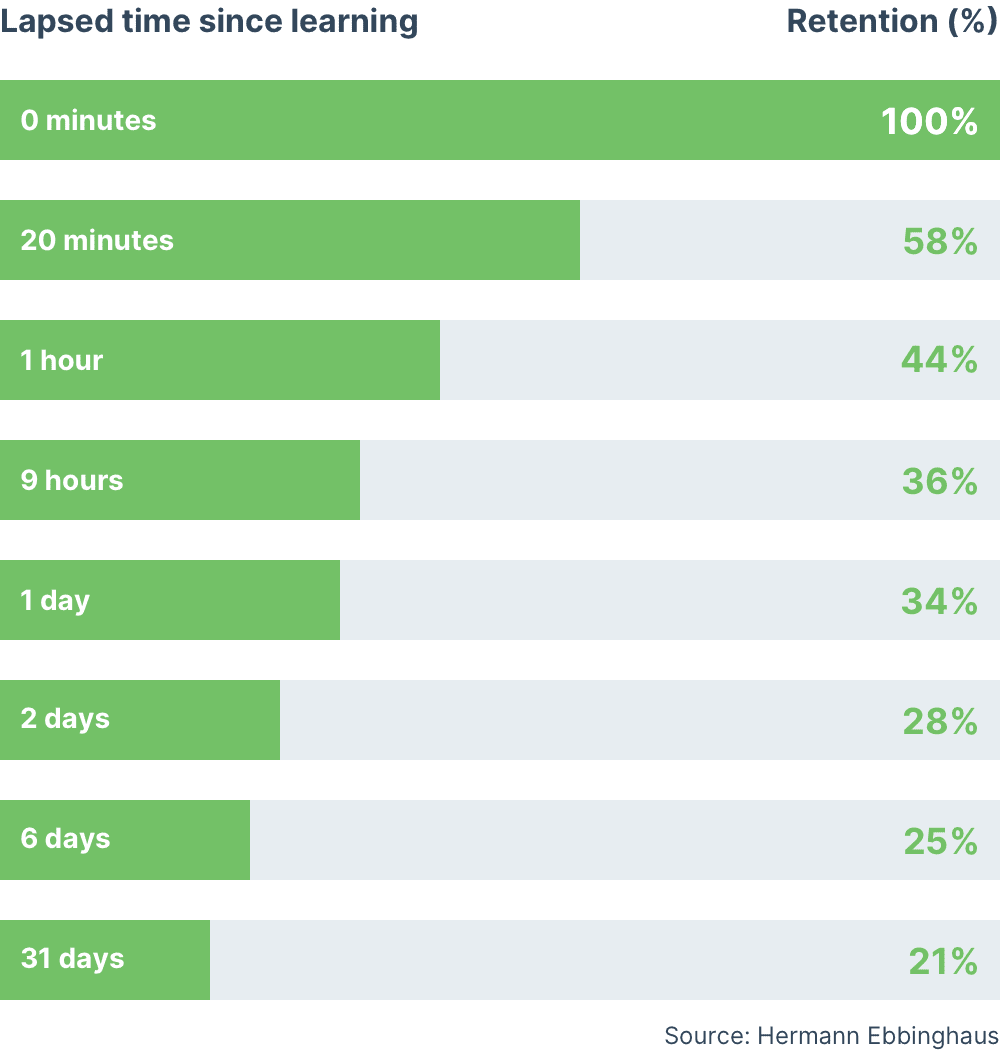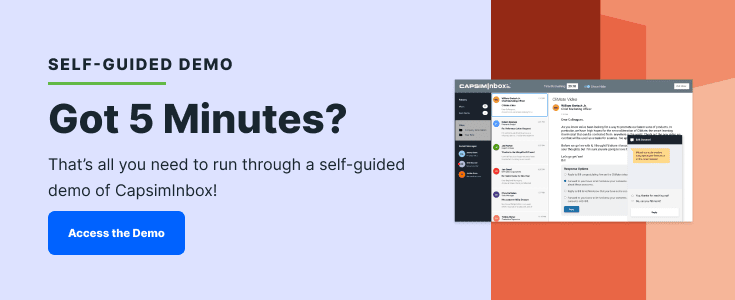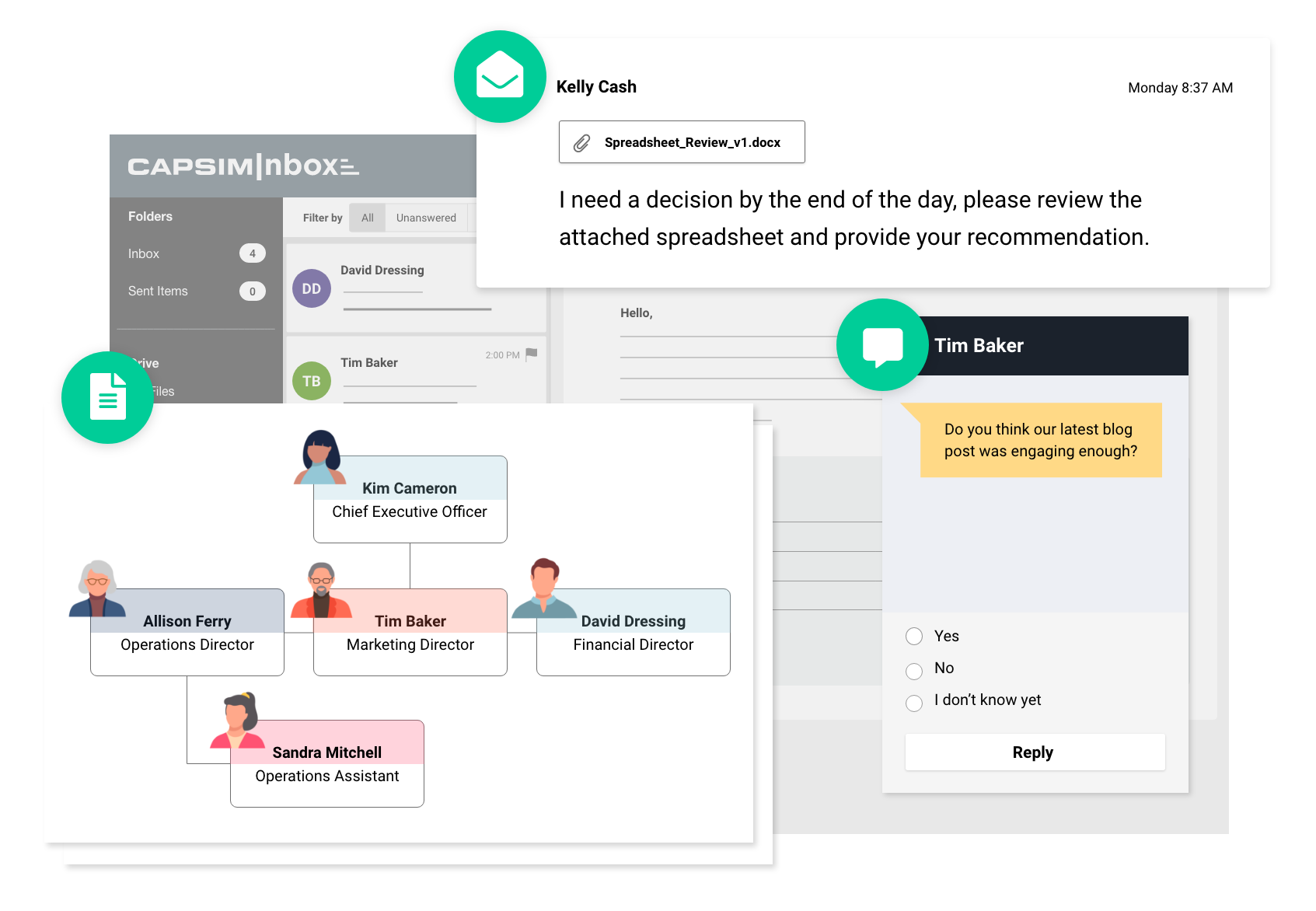How to Increase Knowledge Retention in Your L&D Program
February 17, 2022

The competition for space in your employees’ brains is at an all-time high. A 2020 study found the average person has 6,000 thoughts per day.
This means all the amazing content you delivered at your last training seminar is mixed in with thoughts like “What sounds good for dinner tonight?” and “Don’t forget to mail your mother-in-law’s birthday card.”
Humans are easily distracted and forgetful, making knowledge retention a core challenge for learning and development professionals. But solving the knowledge retention problem (or at least increasing knowledge retention) is vital for the success of your corporate learning and development program and your organization.
The more knowledge your employees can retain and internalize, the more they can put into practice in their work. So how do you increase knowledge retention and employee development from your L&D activities? Read on for a few ideas you can implement immediately.
6 Ways to Increase Knowledge Retention Among Your Employees
Before establishing our six top tips for increasing employee knowledge retention, let’s define knowledge retention first. Knowledge retention refers to how the information you have learned moves from short-term to long-term memory. In other words: Knowledge retention is how you’ll still remember the knowledge gained in your latest training session two weeks from now.
Why is knowledge retention important to your L&D efforts? Simple: Without knowledge retention, you will struggle to achieve business results through training. For your leadership team to see a strong ROI on their L&D investments, employees need to attend training sessions AND apply the knowledge they have learned.
When your employees don’t feel compelled to apply the lessons learned in training, they are less likely to retain that knowledge. According to the Ebbinghaus Forgetting Curve, knowledge loss happens exponentially.

According to Ebbinghaus, people retain memories based on the strength of those memories. Therefore, as the memory weakens, it becomes easier and easier to forget. When employees don’t use the knowledge they have gained in training sessions, their memories become weaker, making them easier to forget altogether.
One of the advantages of simulation-based training is that it encourages knowledge application during training, making it easier to apply again post-training. This practice makes it harder for employees to forget what they’ve learned.
What are some other tips you can use to increase knowledge retention in your L&D program? We will explore six unique strategies you can use to make your training “stickier.”
1. Make it interactive
Which scenario makes it easier to disengage or “zone out” without consequence: A group activity or a big-screen presentation in a conference room? The answer is obvious. When training is interactive, it encourages employees to engage with the material to help them remember it later. Looking for ways to make your training more interactive?
- Gamify Your Learning: When you use your training material in a game or competition, it helps trainees engage by making the training fun. Gamifying your training also allows participants to apply what they have learned in a low-pressure setting.
- Include Group Activities: Humans are social creatures. People are more motivated to pay attention and engage with training if their disengagement has a negative effect on their peers because cooperation is in our nature. Additionally, group activities allow trainees to discuss the training material. Discussion leads to information processing rather than just information receipt, which leads to better retention.
- Present Real-World Scenarios: Your employees are more likely to engage with—and retain—training material when they see how it will benefit them in their everyday work. Include real-world examples in your training and allow your trainees to discuss how they can solve those problems using the material they have learned.
2. Use multiple learning methods
Everyone has a different learning style, and most people learn best by combining multiple learning styles. As a result, an excellent way to increase training knowledge retention in your employees is to use multiple learning methods.
Professionals have identified four major learning styles.
- Visual learners learn best through information they can see: Graphs, diagrams, and maps are a great way to reach these learners.
- Auditory learners appreciate learning through the spoken word. Lectures and group discussions are effective styles to reach this group.
- Kinesthetic learners learn by doing: Hands-on learning is the best way to reach these trainees.
- Lastly, reading or writing-based learners learn from the written word and process information best through written quizzes or assignments.
Your training group will contain a mix of all four learning styles. The only way to reach all learners in the group is to mix and match your training methods to include activities and assignments that fit every style.
Not only does the multi-style approach allow you to engage different learners in different ways, but it also provides a more holistic, “three-dimensional” view of your training topic.
Rather than simply learning about a topic and being asked to recall that information in the form of a quiz, mixing different learning methods enables your trainees to learn a concept, see how it applies to their work duties, and apply that knowledge for themselves in a controlled environment.
3. Take advantage of the benefits of microlearning
One of the reasons many employees dread training in the workplace is that it takes valuable time away from their job duties. After all, a worker’s day-to-day responsibilities don’t disappear to make way for the corporate training retreat.
When employees are stressed about their unfinished workload, they aren’t focusing on the training material. Research shows that most people only pay attention to a speaker for eighteen to twenty minutes, after which they tend to lose focus. This lack of focus makes them less likely to engage with the training and less likely to retain the knowledge presented after the fact.
The solution? Microlearning.
What is microlearning? Microlearning refers to short sessions of 30 minutes or less rather than long seminars or classes. These bite-sized modules are easier to fit into the workday without affecting worker productivity. You can also use this type of training as a follow-up or refresher course following longer training sessions.
Microlearning sessions also tend to be interactive, allowing the employee to apply targeted lessons in a microsimulation. These microsimulations are modular, enabling you to segment your training sessions and deliver relevant sessions to the staff who find the information most useful.
Related Read: How to Author a Microsimulation—Even if You Aren’t a Writer
Microlearning has other benefits as well. Shorter sessions result in less mental fatigue in learners, meaning they have more mental energy to pay attention and retain the material. There is also evidence that the pattern-based learning present in microsimulations helps in knowledge retention.
4. Incorporate storylines and characters
Another way to increase knowledge retention in your L&D program is to include story elements. The storytelling framework supports learning. Why? Our brains are wired to remember stories. People are 20 times more likely to remember facts if they are included in a story than if those facts are presented on their own.
Take a moment to think about your favorite story from childhood. Can you remember the main character’s name? The conflict? How do they defeat their rival and come out victorious? You may have last read the story decades ago, but the story elements have still stuck with you.
We connect with the characters discussed when we hear a story, placing ourselves in their shoes. Not only can this increase your sense of empathy, but it can also increase your understanding of the scenario the character is in. This increase in understanding leads to an increase in knowledge retention.
You can use a learning tool like a simulation to incorporate stories and characters into real-world scenarios your employees may encounter on the job. Not only will these simulations provide your employees with a story framework through which to view the training material, but they will also allow them to apply what they have learned.
5. Make debriefing mandatory
Too often, we see corporate training proceed something like this:
Your leadership team books an expensive speaker. All staff clears their calendar and head to the conference room for a half-day training session. The session proceeds successfully, staff are engaged, leadership raves about how incredible the speaker was.
Then, the training is never mentioned again.
Regardless of how impactful the training session may have been, the staff’s retention of the knowledge learned will be minimal, mitigating your hopes of a return on your investment in that training without a debriefing session.
What is debriefing? In a training environment, debriefing refers to a conversation with employees after they have completed their training session. This conversation is an opportunity for employees to reflect on their learned information. It also provides leadership an opportunity to identify knowledge gaps and misunderstandings.
Employing mandatory debriefing sessions after every staff training is an excellent way to minimize miscommunication and maximize knowledge retention. You can learn more about debriefing and how to implement it in our related blog post about debriefing in simulation-based training.
6. Include assessments and skill gap analyses
A majority of Americans classify themselves as “lifelong learners.” Your employees want to learn, improve, and grow, and your training efforts can assist them in that endeavor.
The first step to solving a problem is becoming aware of that problem. The first step to engaging your learners in your training efforts is to make them aware of their weaknesses.
Leadership may already be interested in skills gap analyses to identify talent gaps in your organization. You can use these skills gap analyses for your training efforts by providing each worker’s results to them.
When workers become aware of the skills gaps they have, this provides them with a starting point for skills they want to improve and develop. In other words, awareness of their skills gaps provides employees with the motivation to engage with your training and shows them how your L&D efforts can help them improve in real, measurable ways.
In addition to skills gap analyses, you should also incorporate regular assessments into your training programs. Employees can view their progress after each assessment. This positive reinforcement will increase their likelihood of continued engagement. All of these elements work together to aid with knowledge retention.
Moving Forward: What Tools Can You Use to Increase Knowledge Retention
We’ve discussed several tactics you can use to increase knowledge retention. Now it’s time to talk about the tools you can use for increased retention.
The current market has no shortage of options for training tools and materials. You can explore e-learning platforms, video libraries, and scenario-based role-playing resources online. One training tool that enables all six methods of increasing knowledge retention discussed in this article is inbox simulations.
Inbox simulations are interactive, enabling trainees to walk through a realistic email inbox. These simulations also incorporate stories and characters: Your employees will interact with fictional customers and colleagues in their inbox simulation, walking through real-world situations in a memorable way.
An inbox simulation learning experience incorporates microlearning. Employees can simulate a full day’s worth of real-world decisions and situations in a ten- to twenty-minute microsimulation.
Finally, using a simulation means your training materials and results are housed in an online platform. This platform offers built-in assessments, skills gap analyses, and reporting. Not only is this information useful for participants, but leaders can use this data to make their debriefing efforts more effective.
Curious about how CapsimInbox can provide your employees with training experiences they will remember? Test-drive a 5-minute self-guided demo to see what the inbox simulation experience is all about.





.png?width=80&name=1-questions%20(1).png)